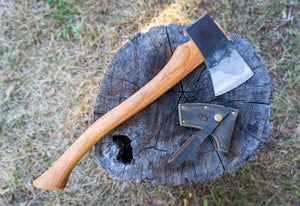
Caring For Your Filson Waxed Canvas Jacket
Is it time to pull your beloved waxed canvas jacket out of the closet? Rain and colder weather mean you need to layer up when working outside. Over time, your waxed cotton jacket will fade and become less weatherproof. Caring for your Filson jacket, vest or coat properly will extend its life, so you can enjoy that protection for years to come.
If your waxed cotton coat or jacket looks a little worse for wear, it’s nothing a little TLC can’t improve. Read on to learn more about how to clean and re-wax a waxed cotton jacket.
How to Wash Waxed Cotton
 Have you already gotten your jacket dirty this season? Or are you planning to clean it before reproofing? The best way to restore waxed cotton or canvas to its mint condition is by using a simple solution: cold water.
Have you already gotten your jacket dirty this season? Or are you planning to clean it before reproofing? The best way to restore waxed cotton or canvas to its mint condition is by using a simple solution: cold water.
You should never put waxed cotton or canvas in the washing machine or dryer. Using a washing machine or dryer will ruin the water-resistant qualities of the material. Cleaning your waxed jacket must be done by hand or with a hose.
You can hose off your jacket outside or spot clean it inside—just don’t use any soaps or detergents. If you’re dealing with caked-on dirt and grime, you may need a bristled brush to remove debris.
Once you finish cleaning, let your jacket or coat air dry. Do not put your jacket in the dryer.
Reproofing A Waxed Cotton Jacket
After you clean a waxed cotton jacket, you may notice that it looks lighter in color. Waxed materials appear lighter in places where the wax is worn from wear. Once your jacket is dry, you can reproof it with wax or a cotton proofer to restore its water-resistant qualities.
Re-waxing a Filson or Carhartt jacket is pretty simple. It takes patience, a proofer and some heat. Follow these steps to re-wax your jacket, coat or vest:
- Find a flat workspace. You’ll want to spread a towel or blanket out over a table to prevent wax from getting on furniture. Make sure your jacket is clean and dry before beginning.
- Apply a coat of wax. Whether you are rubbing wax on by hand or spraying on a proofer, you want to make sure you create an even layer across the entire jacket. If you are applying wax by hand, Filson recommends covering the jacket or coat with dots of wax first. Then, rubbing the dots in a circular motion until blended.
- Bring the heat. Use a heat gun or hair dryer to melt the wax onto the fabric. As it soaks into the material, it should begin to disappear. Heat saturates the wax into your jacket, offering a longer-lasting coating and a darker, leatherlike appearance. You can also let your jacket dry naturally in the sun for several hours for a lighter saturation and appearance.
- Check the seams. You may want to go back and touch up areas where your jacket or coat will be bending or flexing. The seams around the shoulders and well-used pockets may need extra proofing.
- Remove excess. As you apply heat to the fabric, you can wipe off excess wax that won’t soak in. If you’ve left your jacket to dry in the sun or overnight, you may notice that your jacket still feels greasy or oily. If so, you can wipe off the excess wax or proof. You can even lightly hose it off if needed.
- Take it outside! Once your jacket is clean and proofed, it’s ready to protect you from the elements again. Throw on your trusty jacket and enjoy comfort and protection with a fabric that’s in it for the long haul.
Need a new layer this season?
Explore our selection of Filson outerwear to find a jacket, vest or coat for your adventures.
To take care of your clothes and get the most out of every wear, shop our Grangers clothing care products—made to help you keep going, regardless of rain or shine.









